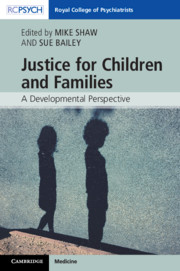Part IV - Autonomy
Published online by Cambridge University Press: 13 August 2018
- Type
- Chapter
- Information
- Justice for Children and FamiliesA Developmental Perspective, pp. 119 - 160Publisher: Cambridge University PressPrint publication year: 2018

